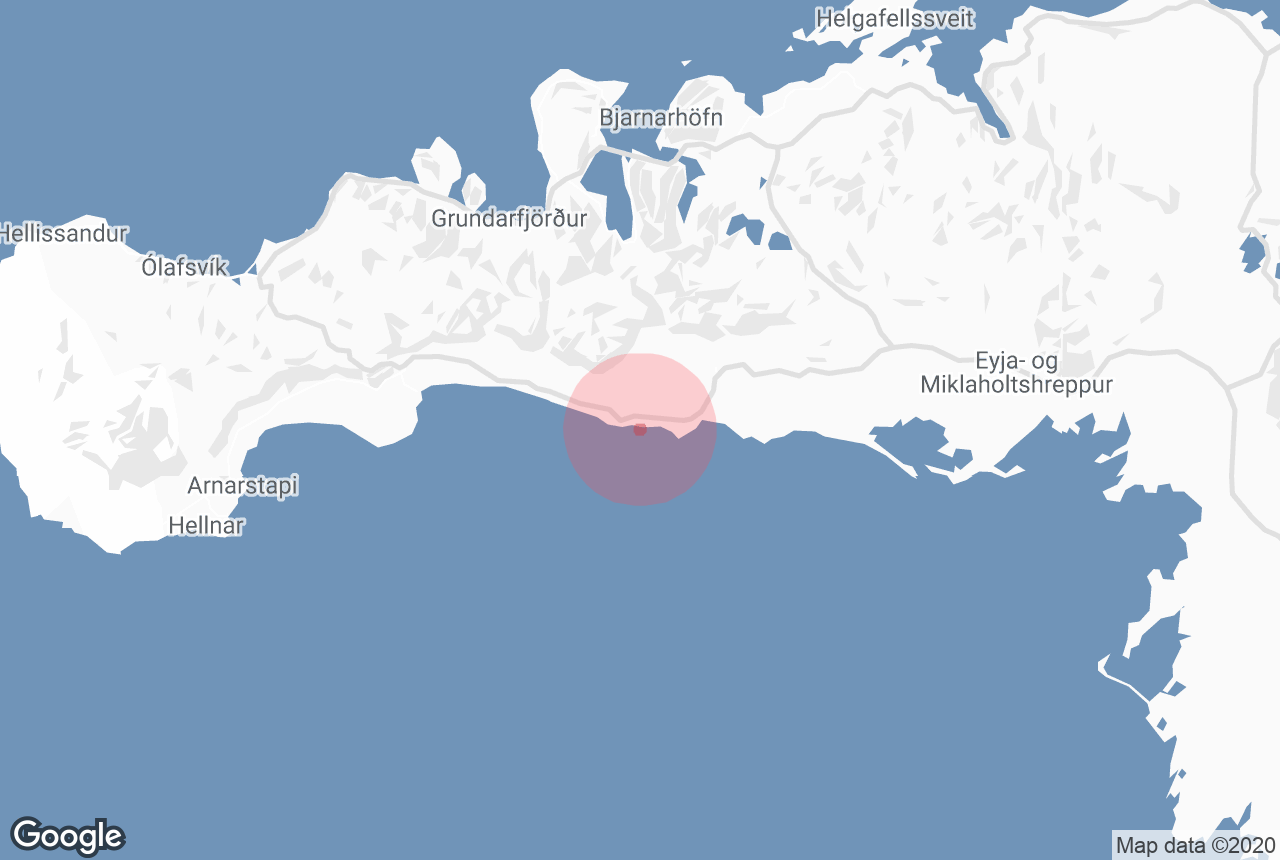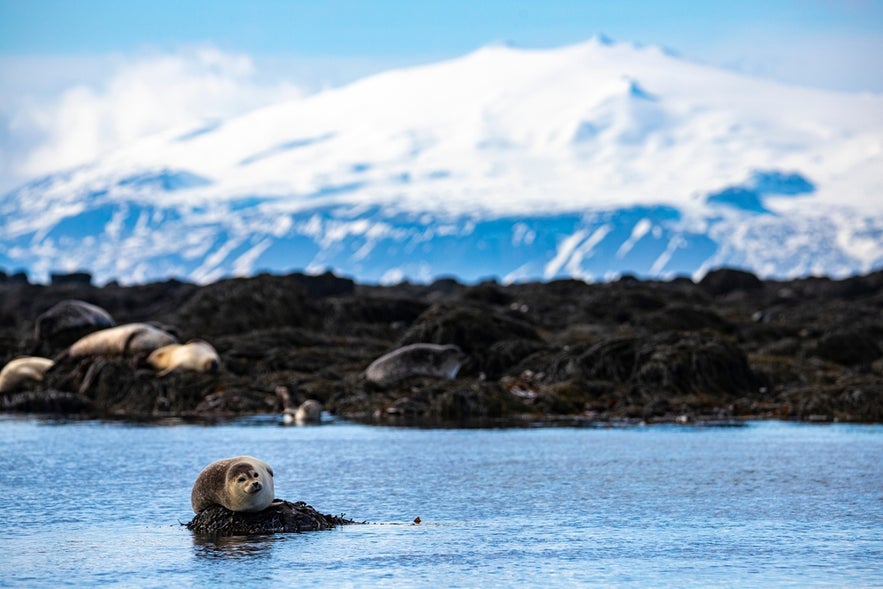
Ytri Tunga Beach is one of the best places in Iceland to see seals in the wild. Located on the southern coast of the Snaefellsnes Peninsula, it is home to a seal colony that often includes both harbor and grey seals. They’re frequently seen on offshore rocks or swimming close to shore, especially during low tide in the summer.
Its reliability as a seal-watching site has made Ytri Tunga a stop on some Snaefellsnes tours and is part of select wildlife tours. A few Iceland vacation packages also include it as part of their itinerary, and it's an easy addition to self-drive tours.
Why You Can Trust Our Content
Guide to Iceland is the most trusted travel platform in Iceland, helping millions of visitors each year. All our content is written and reviewed by local experts who are deeply familiar with Iceland. You can count on us for accurate, up-to-date, and trustworthy travel advice.
You may find it on a Snaefellsnes Peninsula small group tour, particularly those focused on nature and coastal scenery.
With a bit of planning, you can increase your chances of seeing seals up close and enjoy the visit without disturbing their habitat. The sections below cover when to go and how to make the most of your visit to Ytri Tunga Beach.
Facts About Ytri Tunga
-
Unique Golden Sands — Unlike Iceland's typical black sand beaches, Ytri Tunga is known for its rare golden shoreline.
-
Prime Seal Spotting — Ytri Tunga is a reliable location to observe harbor and grey seals in their natural habitat.
-
Best Time To Visit — Summer months and low tide offer the best opportunities to see seals basking on the rocks.
-
What To Bring — Waterproof shoes, warm layers, and binoculars for a better view of the seals.
-
Respect the Wildlife — Keep a safe distance from the seals and avoid disturbing them.
-
Explore the Peninsula — Ytri Tunga is a gateway to the broader Snaefellsnes Peninsula, which features diverse and dramatic landscapes.
Seal Spotting at Ytri Tunga — Meet Iceland’s Coastal Celebrities
Ytri Tunga is one of the most reliable places in Iceland to see seals, alongside Jokulsarlon Glacier Lagoon and the Vatnsnes Peninsula. Unlike other coastal areas where sightings can be irregular, Ytri Tunga is a well-known seal resting spot. Visitors have a high chance of spotting these playful marine mammals basking on the rocks or swimming just offshore.
For the best view without getting too close, don’t forget to pack a pair of binoculars — they’ll make your seal-spotting adventure even more exciting!
Seal Species at Ytri Tunga
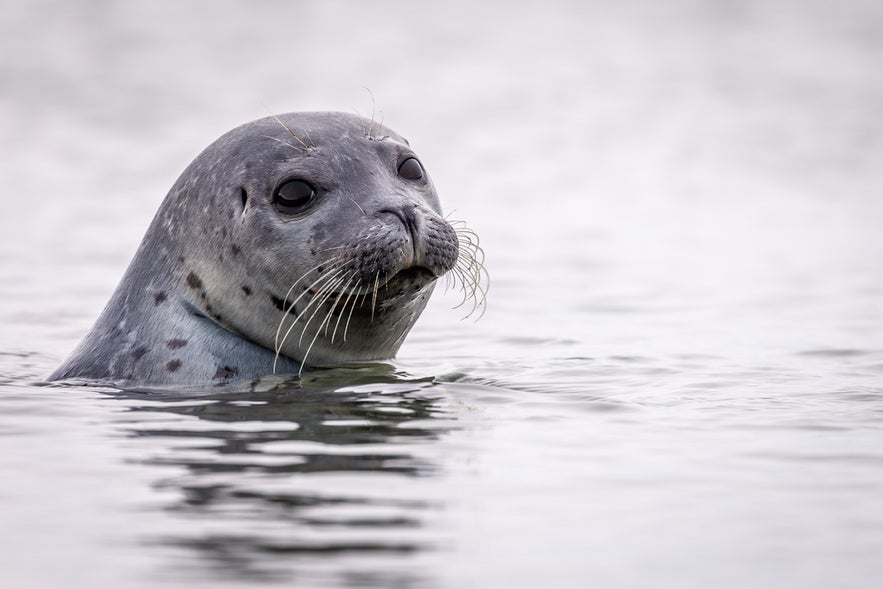 Iceland is home to two main seal species: harbor seals and grey seals. Harbor seals, with their round faces and sleek bodies, are the most common at Ytri Tunga, often seen lounging on the exposed rocks. Grey seals, the larger of the two, occasionally make an appearance but are less frequent visitors.
Iceland is home to two main seal species: harbor seals and grey seals. Harbor seals, with their round faces and sleek bodies, are the most common at Ytri Tunga, often seen lounging on the exposed rocks. Grey seals, the larger of the two, occasionally make an appearance but are less frequent visitors.
While these are the main species, Iceland's waters sometimes welcome other seal visitors, such as hooded seals and ringed seals. However, despite common misconceptions, walruses are not native to Iceland — though they have been spotted in the Westfjords on rare occasions.
If you’re curious about the different species you might encounter, take a look at our ultimate guide to seal watching in Iceland. It offers a deeper dive into the world of Iceland’s playful inhabitants.
Seals in Iceland have long played a role in the country’s culture and history. For centuries, they were vital for survival, providing meat, oil, and waterproof hides.
In Icelandic folklore, they were even revered as selkies, mythical creatures that could shed their skins to become human. This contrasts with other Nordic traditions where selkies were often portrayed as sinister beings.
Today, while there was a time when seals were hunted for their fur or considered a nuisance to fishermen, they are now cherished as part of Iceland’s rich wildlife. Visitors are encouraged to admire them from a respectful distance.
Best Time for Seal Watching in Iceland
 Seals can be seen at Ytri Tunga Beach year-round, but summer offers the best chances for sightings. During the warmer months, low tide reveals the rocky outcrops where seals gather to sunbathe, with long daylight hours for ideal viewing conditions.
Seals can be seen at Ytri Tunga Beach year-round, but summer offers the best chances for sightings. During the warmer months, low tide reveals the rocky outcrops where seals gather to sunbathe, with long daylight hours for ideal viewing conditions.
While winter visitors may still catch a glimpse of Ytri Tunga seals, they tend to be more elusive during the colder months. Stormy weather and high tides can make sightings more challenging, but patient wildlife watchers can still be rewarded.
For the best experience, visit during low tide when the rocks are fully exposed. This is when seals are most likely to be resting onshore, providing prime opportunities for observation and photography.
Golden Sands & Seaside Wonders
 Most of Iceland’s beaches, like Reynisfjara and Diamond Beach, are known for their stark black sand, formed by volcanic activity. While these black sand beaches are famous for their rugged, otherworldly beauty, Ytri Tunga offers a striking contrast with its golden shores.
Most of Iceland’s beaches, like Reynisfjara and Diamond Beach, are known for their stark black sand, formed by volcanic activity. While these black sand beaches are famous for their rugged, otherworldly beauty, Ytri Tunga offers a striking contrast with its golden shores.
The golden hue of this beach comes from a mix of quartz, feldspar, and other minerals, shaped by centuries of erosion. This soft, light-colored sand reflects sunlight, giving the beach a warmer and inviting atmosphere. This rare geological feature also makes it an ideal resting spot for wildlife, particularly seals, which are often seen lounging on the rocks.
 Adding to its quiet charm, Ytri Tunga is also home to a weathered whale bone — a subtle but fascinating reminder of Iceland’s maritime history.
Adding to its quiet charm, Ytri Tunga is also home to a weathered whale bone — a subtle but fascinating reminder of Iceland’s maritime history.
Likely a remnant from a stranded whale, the bone stands as a symbol of the longstanding connection between the Icelandic people and the sea. While it’s a unique feature to spot during a stroll along the beach, visitors are encouraged to treat it with care and leave it undisturbed for others to appreciate.
Beyond the Beach — Coastal Beauty on the Snaefellsnes Peninsula
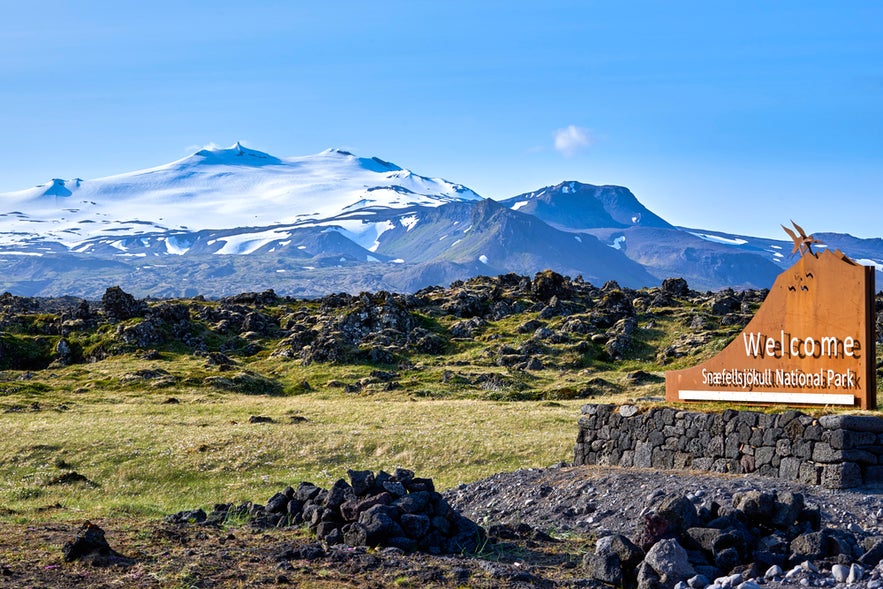 Ytri Tunga is not the only destination worth exploring on the southern coast of the Snaesfellsnes Peninsula. Snaefellsnes is a gateway to some of the most breathtaking scenery in the country. With its wide ocean views, coastal terrain, and proximity to other attractions, the peninsula is a perfect destination for nature lovers and photographers.
Ytri Tunga is not the only destination worth exploring on the southern coast of the Snaesfellsnes Peninsula. Snaefellsnes is a gateway to some of the most breathtaking scenery in the country. With its wide ocean views, coastal terrain, and proximity to other attractions, the peninsula is a perfect destination for nature lovers and photographers.
For a deeper look at what the region has to offer, check out the top things to do in Snaefellsnes.
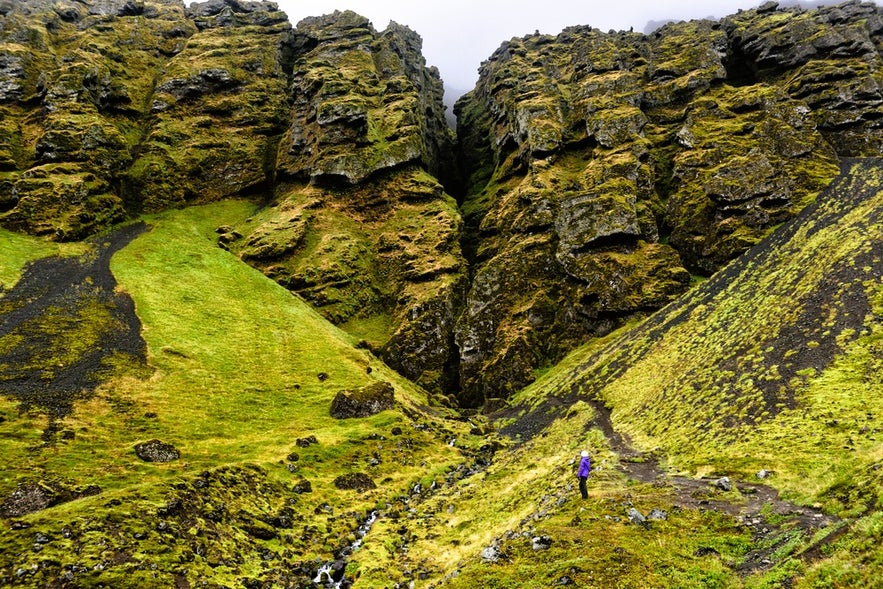 With Snaefellsjokull Glacier towering in the distance, this coastline captures Iceland’s raw beauty. A short drive beyond Ytri Tunga Beach, visitors can explore the Raudfeldsgja Gorge, a hidden canyon with moss-covered walls and a small waterfall tucked inside.
With Snaefellsjokull Glacier towering in the distance, this coastline captures Iceland’s raw beauty. A short drive beyond Ytri Tunga Beach, visitors can explore the Raudfeldsgja Gorge, a hidden canyon with moss-covered walls and a small waterfall tucked inside.
Driving further, the dramatic sea cliffs of Arnarstapi and the black-pebble beach of Djupalonssandur showcase the region’s diverse geological wonders.
Whether you’re stopping at Ytri Tunga Beach as part of a Snaefellsnes road trip or making it your primary destination, the surrounding landscapes ensure an unforgettable experience.
How To Get To Ytri Tunga Beach
Ytri Tunga sits on the southern coast of Snaefellsnes Peninsula, approximately 87 miles (140 kilometers) from Reykjavik. From the capital, take Route 1 (Ring Road) north, then turn on Route 54, which loops around the peninsula. The beach is a 2-hour and 15-minute drive from Reykjavik, just off the main road with a marked turn-off leading to the parking area.
Car rentals or guided Snaefellsnes tours are the best way to visit.
Trips & Tours Featuring Ytri Tunga
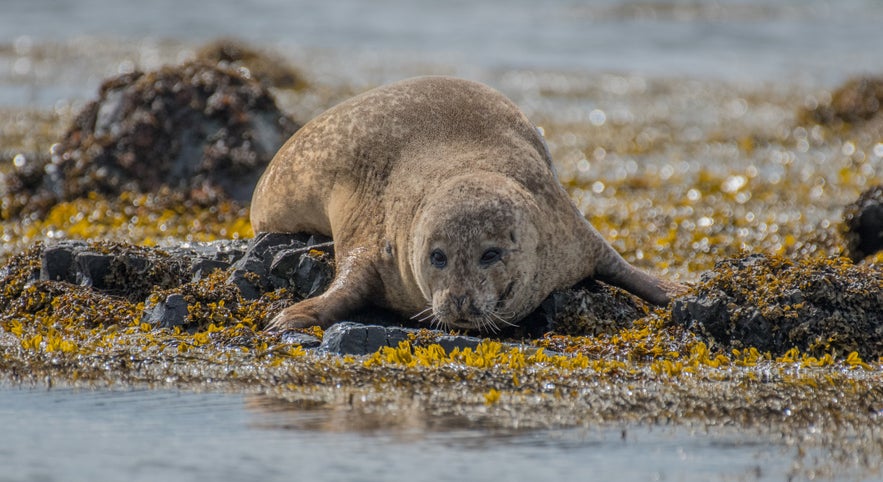
Photo by Pascal Mauerhofer
Many organized tours and sightseeing tours include Ytri Tunga’s seal beach as part of their itinerary, along with major sites like Snaefellsjokull National Park.
Day Tours
-
Snaefellsnes National Park Day Tour — Discover dramatic coastlines, lava fields, and glacier views on this guided day tour that includes highlights like Ytri Tunga and Snaefellsjokull Glacier.
-
Small Group Tour of Snaefellsnes Peninsula — Experience a full day of exploration on this minibus tour of the western coastline of Iceland.
-
11-Hour Sightseeing Tour of Snaefellsnes — Immerse yourself in Iceland’s natural attractions with a meal stop at a local horse farm. Tip: Take this tour in the summer to visit Ytri Tunga.
-
Snaefellsnes Peninsula Sightseeing Day Tour — Explore “Iceland in Miniature” on this guided day tour of the Snaefellsnes Peninsula, including a stop at Ytri Tunga.
Multi-Day Experiences
For travelers looking to go beyond a single day, these multi-day tours and self-drive itineraries offer a more in-depth experience of Iceland. They often include highlights like the Snaefellsnes Peninsula and the golden gem, Ytri Tunga Beach.
Summer
-
2-Week Summer Self-Drive Tour — Take a trip around Iceland’s Ring Road, visiting the Golden Circle, Snaefellsnes Peninsula, and the Westfjords.
-
8-Day Summer Self-Drive Tour — Go at your own pace with this slow-paced self-drive tour that allows you to explore Iceland’s summer attractions in depth.
-
2-Day West Coast Tour of Snaefellsnes Peninsula With Caving — Get acquainted with West Iceland on this guided 2-day adventure.
Winter
-
8-Day Winter Wonderland Tour Package — Discover the best of Iceland with this winter package featuring multiple small-group excursions.
-
1-Week Northern Lights Self-Drive Tour of South & West Iceland with Ice Caving — Explore Iceland from behind the wheel on this self-drive experience with a stop at Ytri Tunga beach.
-
8-Day Northern Lights Winter Vacation Package with Ice Caving — Enjoy a stress-free week exploring the very best of Iceland's natural beauty.
Parking & Visitor Facilities at Ytri Tunga Beach
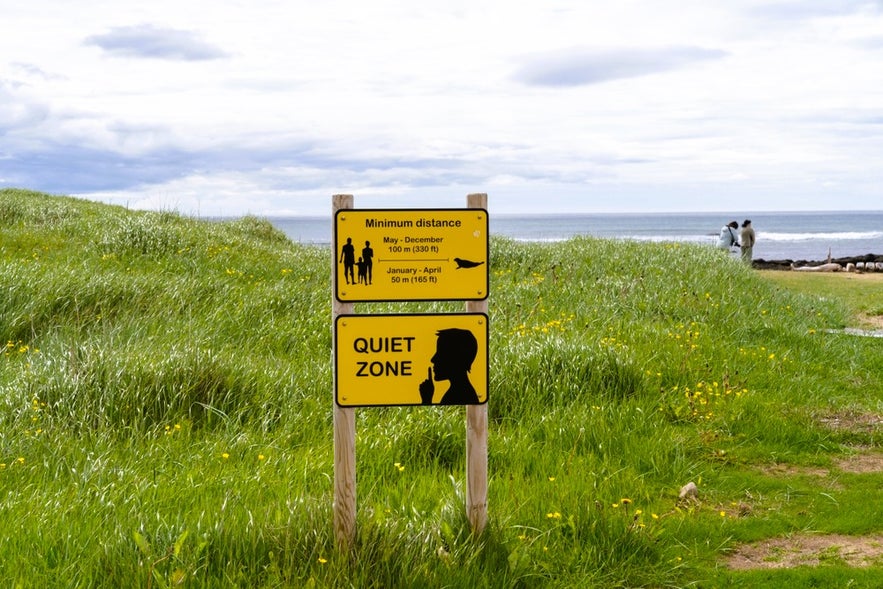 A small gravel parking lot is available near the entrance to Ytri Tunga Beach, providing easy access for visitors. While the area doesn’t have large-scale tourist facilities, there is an information sign near the parking area, offering details about the local seal population and a few reminders.
A small gravel parking lot is available near the entrance to Ytri Tunga Beach, providing easy access for visitors. While the area doesn’t have large-scale tourist facilities, there is an information sign near the parking area, offering details about the local seal population and a few reminders.
The beach itself is a short walk from the parking area, but keep in mind that the terrain can be uneven, with rocky sections leading to the shoreline.
There are no restrooms or food services at Ytri Tunga Beach, so plan accordingly. The nearest facilities, including cafes and gas stations, can be found in nearby towns like Arnarstapi or Hellissandur.
Frequently Asked Questions About Ytri Tunga Beach
Have questions before you visit? Here are some common things travelers wonder about when planning a trip to Ytri Tunga Beach.
Can I swim with the seals?
Swimming at Ytri Tunga Beach is not recommended. The waters of the North Atlantic can be very cold, and the beach is known for seal watching and scenic views. The area’s rocky terrain and potential for strong currents make it less suitable for swimming.
Can I feed the seals?
No, feeding the seals at Ytri Tunga Beach is not allowed. It’s important to respect the wildlife and avoid disturbing them. Feeding seals or other wild animals can alter their natural behavior, and it may make them reliant on human food, which can be harmful to their health.
To ensure a safe and enjoyable experience, it's best to observe the seals from a respectful distance without interfering with their natural activities.
Do I need a four-wheel drive vehicle to reach Ytri Tunga?
No, a four-wheel drive vehicle isn’t necessary. Ytri Tunga is located just off Route 54, a paved road, and is accessible by car year-round, weather permitting.
Is Ytri Tunga Beach suitable for children?
Yes, Ytri Tunga is generally family-friendly. The beach is open and easy to walk on, and kids enjoy spotting seals. However, there are rocky areas and no lifeguards or facilities on-site, so supervision is important.
Discover the Charm of Ytri Tunga — Seals & Golden Sands
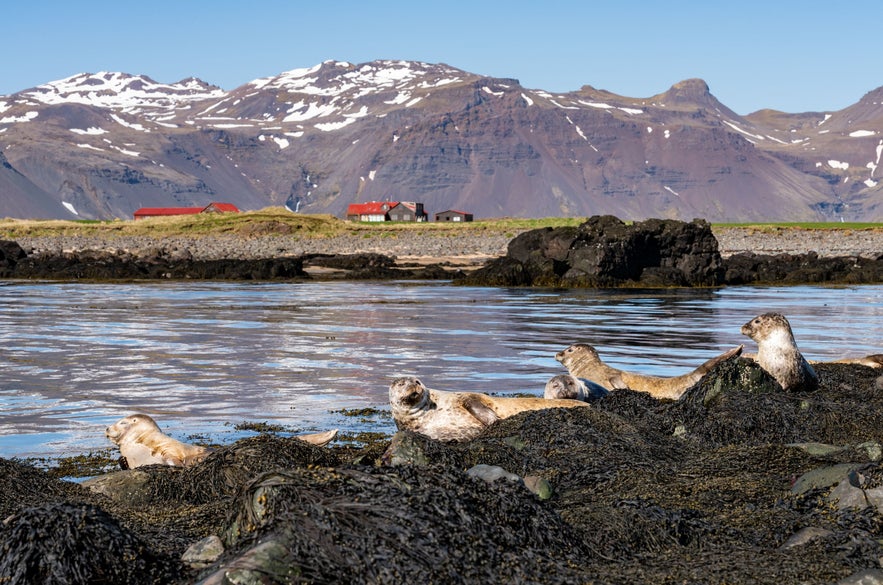 Whether you're drawn by the rare golden sands, the chance to see Ytri Tunga seals up close, or the breathtaking surroundings of the Snaefellsnes Peninsula, this seal beach is a must-visit. With its easy accessibility and year-round wildlife opportunities, Ytri Tunga offers a peaceful and unforgettable glimpse into Iceland’s coastal beauty.
Whether you're drawn by the rare golden sands, the chance to see Ytri Tunga seals up close, or the breathtaking surroundings of the Snaefellsnes Peninsula, this seal beach is a must-visit. With its easy accessibility and year-round wildlife opportunities, Ytri Tunga offers a peaceful and unforgettable glimpse into Iceland’s coastal beauty.
Planning a trip to Snaefellsnes? Be sure to add Ytri Tunga to your itinerary for a chance to see seals and a different side to Iceland’s shorelines.
